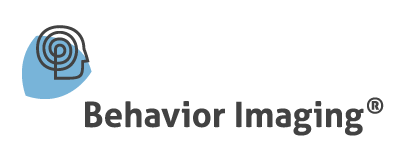A Novel System for Supporting Autism Diagnosis Using Home Videos: Iterative Development and Evaluation of System Design
/in News, Peer Reviewed Publications /by developerNazneen Nazneen, Agata Rozga, Christopher J. Smith, Ron Oberleitner, Gregory D Abowd, Rosa I Arriaga JMIR mHealth uHealth 2015 (Jun 17); 3(2):e68
ABSTRACT
Background: Observing behavior in the natural environment is valuable to obtain an accurate and comprehensive assessment of a child’s behavior, but in practice it is limited to in-clinic observation. Research shows significant time lag between when parents first become concerned and when the child is finally diagnosed with autism. This lag can delay early interventions that have been shown to improve developmental outcomes.
Objective: To develop and evaluate the design of an asynchronous system that allows parents to easily collect clinically valid in-home videos of their child’s behavior and supports diagnosticians in completing diagnostic assessment of autism.
Methods: First, interviews were conducted with 11 clinicians and 6 families to solicit feedback from stakeholders about the system concept. Next, the system was iteratively designed, informed by experiences of families using it in a controlled home-like experimental setting and a participatory design process involving domain experts. Finally, in-field evaluation of the system design was conducted with 5 families of children (4 with previous autism diagnosis and 1 child typically developing) and 3 diagnosticians. For each family, 2 diagnosticians, blind to the child’s previous diagnostic status, independently completed an autism diagnosis via our system. We compared the outcome of the assessment between the 2 diagnosticians, and between each diagnostician and the child’s previous diagnostic status.
Results: The system that resulted through the iterative design process includes (1) NODA smartCapture, a mobile phone-based application for parents to record prescribed video evidence at home; and (2) NODA Connect, a Web portal for diagnosticians to direct in-home video collection, access developmental history, and conduct an assessment by linking evidence of behaviors tagged in the videos to the Diagnostic and Statistical Manual of Mental Disorders criteria. Applying clinical judgment, the diagnostician concludes a diagnostic outcome. During field evaluation, without prior training, parents easily (average rating of 4 on a 5-point scale) used the system to record video evidence. Across all in-home video evidence recorded during field evaluation, 96% (26/27) were judged as clinically useful, for performing an autism diagnosis. For 4 children (3 with autism and 1 typically developing), both diagnosticians independently arrived at the correct diagnostic status (autism versus typical). Overall, in 91% of assessments (10/11) via NODA Connect, diagnosticians confidently (average rating 4.5 on a 5-point scale) concluded a diagnostic outcome that matched with the child’s previous diagnostic status.
Conclusions: The in-field evaluation demonstrated that the system’s design enabled parents to easily record clinically valid evidence of their child’s behavior, and diagnosticians to complete a diagnostic assessment. These results shed light on the potential for appropriately designed telehealth technology to support clinical assessments using in-home video captured by families. This assessment model can be readily generalized to other conditions where direct observation of behavior plays a central role in the assessment process.
JMIR mHealth uHealth 2015;3(2):e68
doi:10.2196/mhealth.4393
